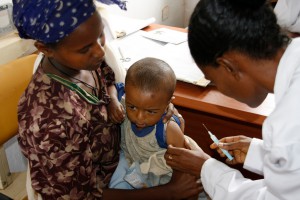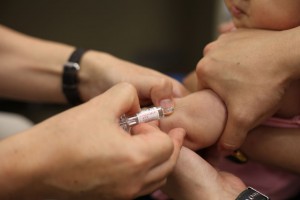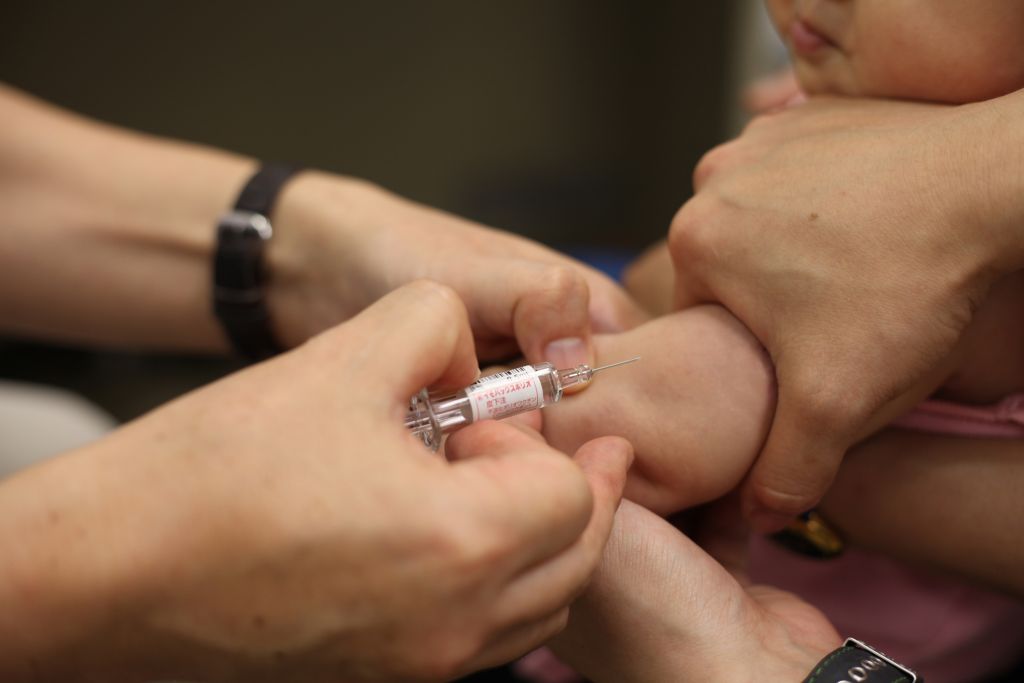The possibility of a devastating epidemic seems to have been weighing heavily on the public mind for the past few years. Whether it is the swine flu, the bird flu, or the current outbreak of Ebola, fear that a deadly pathogen is going to slip past our careful precautions seems to lurk at the back of our collective psyche, aided by mass media happy to blow any threat out of proportion. But while the focus has been primarily on preparing for some newly mutated deadly critter arriving from some exotic locale, old foes have been making a dramatic comeback in unexpected places.
Outbreaks of preventable diseases, like polio, measles and the whooping cough, remain common in the developing world. A combination of economic constraints, poor health care infrastructure and, in a number of cases, fundamentalist groups that take violent action against vaccination efforts, have allowed these maladies to survive in Sub-Saharan Africa, Central and South-East Asia decades after they could have been eradicated. However, one wouldn’t expect to find infection clusters in, say, the most exclusive neighborhoods of Southern California. Surprisingly, one would be wrong.
Anti-vaccination movements are not new in Western societies. Historically their roster has been populated by those that refused medical treatment on religious grounds, or civil libertarians who opposed mandatory vaccinations, seeing them as governmental overreach. But in recent decades there has been a fundamental shift, bringing new momentum by drawing support from a different source altogether: New Age suburbanites.
Anti-corporatism and dedication to “all natural” alternative remedies, both central tenants of the New Age movement, have put it at ends with the practice of vaccination. Opposition ranges from seeing them as unnecessary, ineffective snake-oils, marketed as essential by big pharmaceutical companies to bolster their profits, purport them as causes of autism or auto-immune conditions in children.
 Most prominent among the evidence presented by the anti-vaccine advocates is a 1998 study by former surgeon and researcher Andrew Wakefield, linking the widely used MMR (measles, mumps and rubella) vaccine with the appearance of developmental disorders in previously healthy children. This study has seen been subsequently found to contain a multitude of gross inaccuracies and has been retracted by the journal that published it. As for Dr Wakefield, he earned the ‘former’ in his title when it came to light that prior to, and in parallel with, the study, he was receiving payments for participating as an expert in a lawsuit against the makers of the MMR vaccine, while also working to create and market his own, competing vaccine.
Most prominent among the evidence presented by the anti-vaccine advocates is a 1998 study by former surgeon and researcher Andrew Wakefield, linking the widely used MMR (measles, mumps and rubella) vaccine with the appearance of developmental disorders in previously healthy children. This study has seen been subsequently found to contain a multitude of gross inaccuracies and has been retracted by the journal that published it. As for Dr Wakefield, he earned the ‘former’ in his title when it came to light that prior to, and in parallel with, the study, he was receiving payments for participating as an expert in a lawsuit against the makers of the MMR vaccine, while also working to create and market his own, competing vaccine.
Another oft referenced concern is that vaccine additives can be harmful to those receiving them. Specifically, the preservative Thimerosal (or Thiomersal) has often been identified as the culprit behind the alleged link between vaccines and autism. While this compound metabolises into ethylmercury, a molecule that is quickly eliminated by the human body, the anti-vaccination movement often confuses it with methylmercury, a different mercury compound that remains in the body for much longer and is toxic in high concentrations. Despite the lack of any scientific evidence against it, public concern regarding Thimerosal reached such high levels that most Western governments banned its use on vaccines about fifteen years ago. Since then, the frequency of autism in children has remained unchanged or increased in all the countries in question.
All this is not to say that there aren’t legitimate risks associated with vaccination. A vaccine, like any medicine, can cause unintended reactions. Those usually include sore throats, headaches or low-grade fevers, and in rare occasions can manifest more severely to include fainting spells or seizures. Lasting damage caused by most commonly administered vaccines is typically so rare as to not be statistically measurable.
This was not the case however for the vaccine Pandemrix, intended to inoculate against the 2009 H1N1 “swine flu” pandemic, which has been confirmed to be a contributing factor in a cluster of narcolepsy cases in Finland, Sweden and the United Kingdom. Investigations by the Swedish Medical Products Agency and the Finnish National Institute for Health and Welfare have concluded that a clear link exists between those cases and Pandemrix. The exact nature of this link is still unknown and currently under intense scrutiny, while similar vaccines administered the same year in the United States and China have also been examined, and shown to have no link to narcolepsy.
 Unlike their possible harmful effects, there is nothing ambiguous about what happens when a large enough percentage of a population foregoes vaccination. Since a small chance of being infected remains even in those that have received the vaccine, successful prevention depends on near universal coverage. This has been amply, and tragically, demonstrated in the numerous occasions where a drop in vaccination rates has been quickly followed by epidemics of preventable diseases. This has been equally true in developing or developed states, counter to a common anti-vaccination movement refrain, claiming that increasing levels of sanitation is the real cause for the elimination of those illnesses.
Unlike their possible harmful effects, there is nothing ambiguous about what happens when a large enough percentage of a population foregoes vaccination. Since a small chance of being infected remains even in those that have received the vaccine, successful prevention depends on near universal coverage. This has been amply, and tragically, demonstrated in the numerous occasions where a drop in vaccination rates has been quickly followed by epidemics of preventable diseases. This has been equally true in developing or developed states, counter to a common anti-vaccination movement refrain, claiming that increasing levels of sanitation is the real cause for the elimination of those illnesses.
Examples abound: Vaccination rates against the whooping cough in Japan were approximately 80% in 1974. An anti-vaccination movement caused those rates to fall to 10% within two years. In 1979, a whooping cough epidemic numbered 13.000 infected and 41 dead. After the revival of a similar movement in Southern California in the early 2000s the state suffered epidemics both in 2010 and 2014, with 8000 and 9000 infected respectively, and a total of 13 deaths, all of them young children or infants.
Modern medicine for the past two hundred years has achieved miracles, more than doubling human life expectancy and offering relief from scourges that had plagued humanity for most of its history. And while these life-saving advances have certainly not been uniformly distributed worldwide, every year they become available to more and more people across the globe. As battles are slowly won, against greed and corruption, against dogma and violence, it is truly disheartening to see these same technologies being spurned by those that already have access to them, simply because they feel they know better.
Information has never been easier to get to, with an ocean of knowledge at the fingertips of every one of us. It has become imperative that while researching any subject, a variety of different angles is examined before forming an informed opinion. Not all information is created equal, and one should always be mindful of the natural tendency in all of us to overvalue evidence that supports what we already believe to be true. Additionally, while never slavishly deferring to them, one should always give due weight to the conclusions of those that engage on a subject professionally. Especially when, as in this case, it concerns matters of life or death.
By Andreas Kechagias
Image credit:
Picture 1: DFID – UK Department for International Development, licensed under CC BY 2.0
Picture 2: Sanofi Pasteur, licensed under CC BY-NC-ND 2.0







